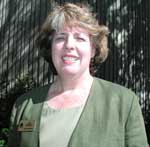Children’s Center night enrollment falls after first month of new program

Image: Children’s Center night enrollment falls after first month of new program:ASI Interim Executive Director Pat Worley says the Children’s Center must average 21 children per night session to keep the evening program alive next year.Photo by Narrmayet Taonus/State Hornet:
November 5, 2001
Shrinking enrollment in the Sacramento State Children Center?s evening childcare program that, if unchecked, could signal the end of the program after this academic year has parents, staff and Associated Students, Inc. officials feeling uneasy.
Tina Aguilar, evening supervisor for the Children’s Center, admits that she is concerned about the health of the evening session.”I don’t know what to make of it,” she said. “It’s frustrating.”
Her frustration stems from falling enrollment numbers during the Center’s 6-10 p.m. Monday through Thursday sessions. According to a report presented to ASI, which operates the Center, the average number of children enrolled in the evening dropped from 21.5 per session in September to 18 in October.
Children’s Center Director Teri Mahan is concerned because the evening service must average 21 children per night under the terms of a plan hammered out by ASI and the Parent Advisory Council last spring to keep the program alive.
Mahan thinks that part of the reason the Center doesn’t attract more evening business is that parents can find children care with relatives or friends.
“There are more options for families in the evening,” she said. If the Center loses money this year because of low night enrollment, it would be a potentially fatal blow to the late service.
“What are they doing about this?” asked evening graduate student Donna Dexter. “Couldn’t they see this coming?”
Dexter, whose two children attend the Center at night, was pleased when ASI backed away from shutting down the late session, but now thinks the program is suffering from poor promotion.
“They’ve done virtually no advertising,” she said.
Dexter and other critics point to the Center’s failure to update its Web site until Sept. 21, almost four months after ASI revamped the evening program’s hours, as one example of poor promotion.
Last year, the Center closed at 8:30 p.m., although many night classes at Sac State run until 10 p.m. This year, the facility stays open until 10 p.m.
“Earlier this year at election time, many ASI candidates ran and won on the slogan, ‘Save the evening program,'” she said. “I’d like to see some more advocacy for the evening program right now.”
Dexter has a laundry list of promotional ideas, beginning with advertising on campus and in local newspapers to raise awareness of the evening sessions.
“I’d even be willing to put up fliers myself,” she said.
Dexter thinks that advertising to community colleges, technical schools and employment services would build a clientele among transferring students.
She would also like to see the Center work with university admissions to send mass mailers out to returning evening graduate students and new enrollees.
The trick, she said, is to sell the program to parents before they enroll in classes, since knowing that an evening service is available could make night courses more attractive to someone trying to juggle school, work and child care.
“ASI needs to get creative,” Dexter said.
Mahan said the Children’s Center needs to improve its visibility on campus and said that she is committed to doing just that between now and the beginning of next semester.
“We’re planning to promote the Center differently,” Mahan said, and noted that PAC is planning a flier campaign in the next few weeks.
However, she disagreed that promoting off-campus is a good idea, given the Center’s limited space and staff for evening care. She said a successful ad campaign might attract parents not affiliated with the university who could nose out students and staff who need evening childcare, especially since few childcare facilities in the area are open after 6 p.m.
“We’re here to service the campus community. We’re trying to meet student need,” Mahan said, emphasizing the word “student.”
Planners had hoped that later operating hours, along with a new fee schedule and a move to smaller facilities with less staff, would change the financial course of a program that has struggled to survive for several years.
But all of those maneuvers mean little if the evening program can’t hit its average enrollment goal, according to ASI interim Executive Director Pat Worley.
“We need the numbers to come on strong this spring,” she said. “If the numbers are there by the end of the academic year, we’ll feel confident about moving ahead with things next fall.”
Mahan said her conversations with her counterparts at other colleges indicate that Sac State evening child care struggles are not unique. At a meeting with other child care administrators, Mahan found that only one other school out of 25 represented offered evening child care.
“I attended a conference recently and I asked someone who has evening care, ‘How are you numbers?’ She said her numbers are really low,” Mahan said.
“After several conversations with people, it didn’t feel like our program is off kilter.”
Numbers aren’t the only thing that matters to Dexter. She’s worried about what her children will lose if the evening program shuts down before she finishes her master’s degree in political science.
“My kids see their mom making something of herself, getting her education,” Dexter said. “I’m a role model for them. If I have to stop going to school because of child care, they’ll lose that.”













































































































































